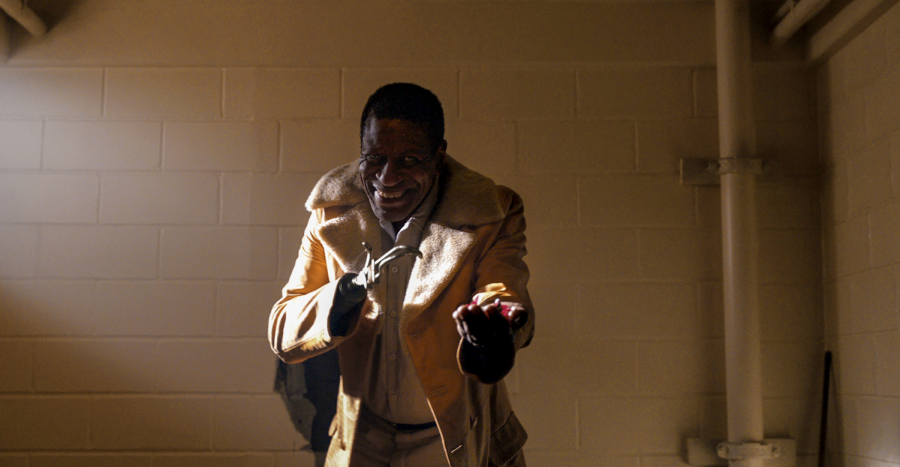2021’s ‘Candyman’ disappoints with confusing storyline, lack of scares
August 29, 2021
Candyman. Candyman. Candyman. Candyman. Ca-
Director Nia DaCosta’s “Candyman” finally hit theaters Aug. 27 after being delayed from June 2020. Taking place 29 years after the original “Candyman” (1992), the Jordan Peele-produced update follows desperate artist Anthony McCoy (Yahya Abdul-Mateen II) who becomes fascinated with the urban legend. Yet, the deeper he dives into the villain’s history, Candyman (Michael Hargrove) begins making his presence known to McCoy, causing the now-gentrified Cabrini-Green body count to rise as residents face an evil they thought was long gone.
When fans think back to the original 1992 “Candyman,” one person always comes to mind: Tony Todd. Todd famously portrayed the hook-handed spirit, making horror history with his haunting voice and mesmerizing appearance. Unlike most slashers, Candyman exhibits a captivating personality and charm. Although Todd worked with the new film, his iconic personality gets cast aside for a stripped down jump-scare iteration.
The narrative presented in the new film suggests the existence of multiple Candymen throughout history, each one a victim of racial violence and conjured by repeating his name five times in a mirror. If each version of the legend was presented with their own unique persona and outfit, the concept would have worked infinitely better. Instead, the writers stick the audience with a Candyman that looks exactly like Tony Todd’s, yet isn’t played by the iconic actor.
Cinematography doesn’t disappoint in DaCosta’s viciously sweet world. The swirling skyscrapers reaching toward fog-covered skies convey beautifully haunting visuals. Clever camera placements to showcase mirrors result in plenty of unsettling Candyman appearances throughout the film’s scarier sequences. One impressive wide shot depicts a gruesome killing as the camera pulls back from a large building, revealing oblivious apartment neighbors through the varying windows.
In terms of scares, however, “Candyman” drops the ball. While featuring a plethora of gruesome, spine-tingling imagery, DaCosta can’t seem to effectively build, or deliver, a suspenseful fright. One too many times, awkward editing cuts and framing deflate the tension of suspenseful build-ups. However, the sound remained top notch with the eerie buzz of bees and dying LED lights that were weaponized to build tension.
The one consistently strong element in “Candyman” is the performances. Abdul-Mateen II powerfully leads the narrative with his dark and intimate portrayal of Anthony McCoy. As the character becomes consumed by his haunting studies of the Candyman, the actor adjusts his performance to embody his ensuing dread. Vanessa Estelle Williams’ brief appearance in the film, reprising her role as Anne-Marie McCoy, grounds the film’s original legacy, offering a much more compelling story element that should’ve been further explored.
Despite offering compelling ideas and metaphors, “Candyman” struggles with many of the key elements that made the 1992 original successful.
2.5 bee stings out of 5



